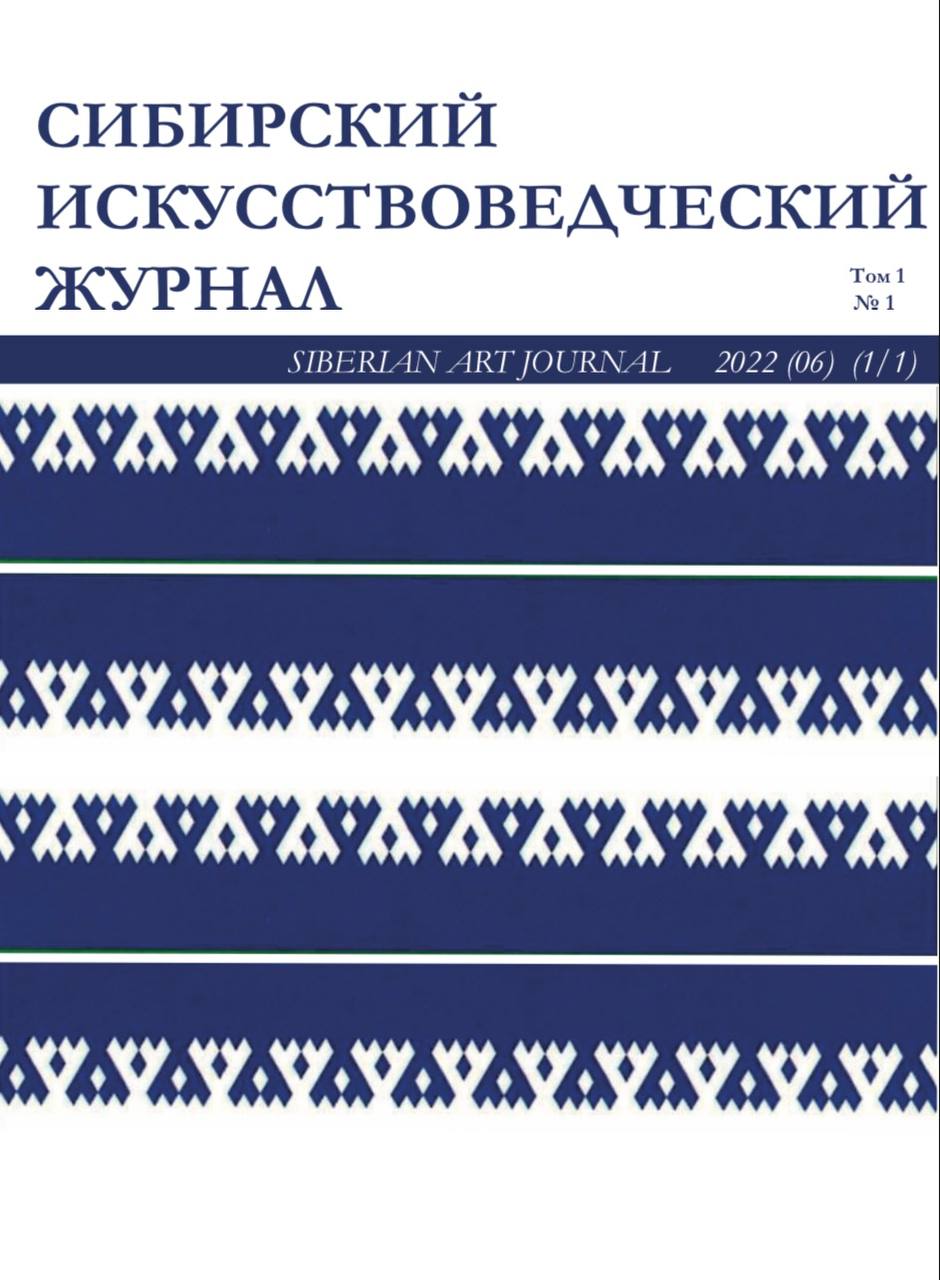Krasnoyarsk art museum named after V.I. Surikov
Russian Federation
The article considers the peculiarities of the viewer's perception of a work of fine art with two different approaches to its content. The first approach is based on the viewer's desire to get an answer to the question: «What did the author want to say?». The second approach keeps the focus of the viewer's communication with the work of art on the question: «What is this work about?». In the first case, the artistic idea of the work is comprehended on a personal level, based on the individual author's interpretation of the image. In the second case, a richer assimilation by the viewer of the artistic idea of the work is possible at the personal, actual-historical and universal levels. The specificity of each approach is considered on the example of the sculptural work "Transformation" by Dashi Namdakov, located on the campus of the Siberian Federal University (Krasnoyarsk). Based on the methodology of the modern theory of fine arts by V.I. Zhukovsky and N.P. Koptseva convincingly proves that both approaches require significant efforts from the viewer to prepare for interaction with a work of fine art. Otherwise, the content of the work will be reduced to the viewer's fantasies about the author and his life or about the theme of the work. Only conscious viewing, perceived as a skill that needs to be specially trained and constantly trained, can guarantee a deep meaningful interaction of the viewer with a work of fine art at its different content levels.
work of fine art, artistic idea, author, spectator, spectatorship, Dashi Namdakov, Transformation
1. Balzhurova A.J. (2012). "Strange space" in the art of Dasha Namdakov // Bulletin of the Buryat State University, 14 (1), 154-158
2. Batorova E.A. (2017). Modern sculptor Dashi Namdakov. The art of sculpture in the XX-XXI centuries: masters, trends, problems: a collective monograph. Moscow, 406-414
3. Komarova N.P. (2018). Dashi Namdakov: immersion in the archaic. Scientific heritage of I.I. Soktoeva in the light of actual problems of modern fine art. Materials of the All-Russian scientific and practical conference with international participation dedicated to the 90th anniversary of the birth of I.I. Soktoeva, 104-110
4. Koptseva N.P., Zhukovskiy V.I. (2008). The artistic image as a process and result of game relations between a work of visual art as an object and its spectator. Journal of Siberian Federal University. Humanities and Social Sciences, vol. 1 (2), 226-244
5. Koptseva N.P., Zhukovsky V.I. (2008). The truth of the work of art. Art and Education, 4 (54), 5-17
6. Kubanova T.A. (2022). The origins and artistic features of Dasha Namdakov's sculptural works (2000s) // Society: philosophy, history, culture, 5 (97), 198-201
7. Moskalyuk M.V. (2022). Bronze myths formation. Krasnoyarsk period of Dashi Namdakov’s creative path. Journal of Siberian Federal University. Humanities and Social Sciences, vol. 15 (4), 494-502
8. Nikitina G. (2020). Synthesis of traditions and innovations in Siberian conceptual art: the work of Dasha Namdakov. Ethnic processes of the Arctic, North and Siberia, vol. 1 (1), 21-28
9. Nikolaeva L.Yu. (2013). The artistic phenomenon of plasticity of Dasha Namdakov. Scientific Notes of the Trans-Baikal State University, 4 (51), 203-206
10. Safontseva E.P. (2021). The influence of folk traditions in determining the creative path of Dasha Namdakov. Current scientific research in the modern world, 3-5 (71), 92-94
11. Tkacheva M.L. (2018). Creativity of Dasha Namdakov in the context of modern culture. Izvestiya Baykalskogo gosudarstvennogo universiteta, vol. 28 (1), 150-158
12. Zemlyanaya T.N. (2015). Features of Dasha Namdakov's plastic language. Nauka i sovremennost, 37-1, 64-67
13. Zhukovskiy V.I. (2014). Modern theory of visual art: regional project. Journal of Siberian Federal University. Humanities and Social Sciences, vol. 7 (8), 1301-1311
14. Zhukovsky V.I. (2012). The spectator and the work of fine art: the problem of dialogue in the educational space. Historical, philosophical, political and legal sciences, cultural studies and art criticism. Questions of theory and practice, 3-1 (17), 84-86
15. Zhukovsky V.I. (2010). The nature and features of the viewer's dialogue with a work of fine art. Pedagogy of art, 2, 229-235
16. Zhukovsky V.I. (2011). Theory of Fine Art. St. Petersburg: Alteya, 496
17. Zhukovsky V.I. (2016). Dialogue in the educational space: the spectator and the work of fine art // Alma mater (Bulletin of the Higher school), 12, 77-81
18. Zhukovsky V.I., Koptseva N.P. (2010). Art as a vital necessity. A work of fine art. Art and Education, 3 (65), 5-29





